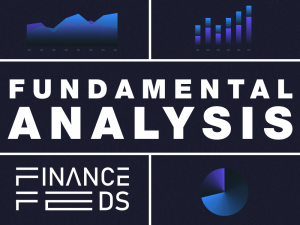Complicit by proxy: FX publications can be held liable for advocating or ‘advertising’ bogus schemes
Financial publications are on the hook if they publish promotional articles about schemes that are potentially detrimental to customers. ASIC starts the ball rolling by taking an Australian publication in court for posting such an article

A long held misconception among the media circles is that by publishing articles and advertorials that relate to any form of retail product that is available to the general public, any malice caused by such a firm would be the responsibility of the company and its directors, and not the media that promoted it.
It has become very clear over the past year that the authorities which regulate both financial services and media advertising, are now beginning to look at who is responsible for encouraging retail customers to invest in schemes that could potentially not have their best interests in mind.
The recent advertising bans by Google and Facebook that apply to certain types of retail trading products, national government-led blocking of certain OTC products being advertised in specific jurisdictions has been the precursor to actions that are now being taken against specific publishing companies by financial markets regulatory authorities.
As last week drew to a close, the Australian Securities and Investments Commission (ASIC) began action against a financial publisher and its director for ‘misleading publications.
The action has been set in place in the form of civil penalty proceedings in Australia’s federal court against a company called Port Phillip Publishing Pty (PPP) which is an online financial markets publishing company, which also holds an ASIC AFSL license.
The firm’s director, Kristan Sayce is also included in ASIC’s civil proceedings.
The proceeding concerns an article promoting an investment strategy which, according to PPP, consumers could adopt to “piggyback”, or mimic the performance of, the Australian Government’s Future Fund. The article said that the investment strategy would generate monthly income of $540 to $6,667.
The article, which included client testimonials purportedly supporting the strategy, was targeted at retirees and was published on two of PPP’s websites and emailed to approximately 120,000 subscribers. Consumers were able to access the promoted investment strategy by purchasing a detailed guide from PPP for $49.
ASIC alleges that the article and the guide were misleading and deceptive because consumers could not mimic the performance of the Future Fund by adopting the promoted investment strategy, and that the testimonials contained in the article were false.
ASIC alleges that PPP and Sayce breached various consumer protection provisions of the ASIC Act and Corporations Act, that PPP breached its AFSL obligations, and that Sayce breached his duties as a director of PPP.
In addition to declarations and financial penalties, ASIC seeks corrective advertising orders, injunctions and disqualification orders against Sayce. and the first hearing of the matter is listed for 22 February 2019.
This particular article was, according to ASIC, published on PPP’s website, and then emailed to its 120,000 subscribers between September 2017 and January 2018, and was likely considered by the publisher as a relatively innocuous advertorial or PR, however this sews the seed for future censuring of media entities for being complicit in advocating dubious schemes.
FinanceFeeds view is that free press and freedom of speech is an extremely important component of any online business which combines financial services and technology, especially in our industry where quality research and detailed reporting is vital for the transparency required by customers and to provide full information which assists with the development and innovation of high quality future products, as well as to support the good quality firms in explaining their products to both a retail and B2B audience.
However, it is a good thing that those propagating schemes will not be able to use or abuse media channels, as the media in our industry is an essential cornerstone which maintains both a connection between each component of the industry from liquidity providers and technology vendors to retail brokers and helps them facilitate good quality and progressive business, but also as a method of creating research-based transparency and information that should be kept impartial, well researched and informative in order to maintain its respect and validity.









